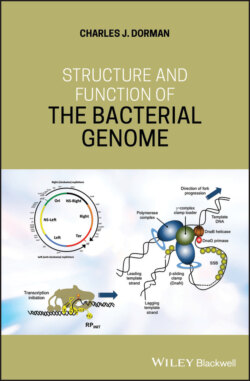Читать книгу Structure and Function of the Bacterial Genome - Charles J. Dorman - Страница 54
1.43 StpA: A Paralogue of H‐NS
ОглавлениеThe ratio of H‐NS to its genomic binding sites appears to be important for the competitive fitness of the bacterial cell. Bacteria that gain extra copies of the hns gene through the introduction of multicopy recombinant plasmids that encode this NAP gain in their capacity to replicate themselves (C.J. Dorman, unpublished). The model organisms E. coli and Salmonella typhimurium encode the StpA protein, a second H‐NS‐like molecule. It shares many features with H‐NS and has been described as an RNA chaperone (Doetsch et al. 2010). StpA can substitute for H‐NS and it can form heterodimers with its paralogue (Johansson et al. 2001; Leonard et al. 2009; Sonden and Uhlin 1996; Zhang et al. 1996 Refs). The stpA gene is expressed maximally during exponential growth, perhaps to provide an auxiliary supply of H‐NS‐like protein at a point in the growth cycle where the number of H‐NS binding sites is most numerous (Deighan et al. 2003; Free and Dorman 1997). In this context, it is interesting to note that the transcription of the hns gene is linked positively to chromosome replication (Free and Dorman 1995).
